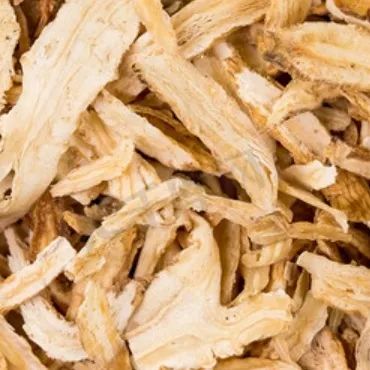Author: Tong Huan, Deputy Chief Pharmacist, Third People’s Hospital of Hubei Province
Angelica Sinensis
danggui


The processing of Angelica Sinensis has accumulated a wealth of experience from ancient times to the present. After processing, the properties, action sites, and effects of Angelica Sinensis undergo certain changes.
There are various methods for processing Angelica Sinensis, and different processed products have different effects and indications in formulas. The main processing methods include alcohol roasting, soil frying, and charcoal frying.



01
Source and Efficacy
Source: Angelica Sinensis is the dried root of the plant from the Apiaceae family. It is harvested in late autumn, with the fibrous roots and soil removed, and after some moisture evaporates, it is bundled and dried slowly with smoke.
Efficacy and Indications: Nourishes blood and invigorates circulation, regulates menstruation and alleviates pain, moistens the intestines and relieves constipation. It is used for blood deficiency with sallow complexion, dizziness, palpitations, irregular menstruation, dysmenorrhea, abdominal pain due to deficiency and cold, rheumatic pain, trauma, carbuncles, and constipation due to dryness.

02
Processing Methods
Angelica Sinensis: Take the original medicinal material, remove impurities, wash clean, moisten thoroughly, slice thinly, and dry in the sun or at low temperature.
Alcohol-Roasted Angelica Sinensis: Take clean slices of Angelica Sinensis, mix with a specific amount of yellow wine, let it moisten slightly, and after the wine is absorbed, place it in a frying container, heat gently until deep yellow, and cool.
Soil-Fried Angelica Sinensis: Place preheated soil powder in a frying container, heat over medium heat until the soil is flexible, add clean slices of Angelica Sinensis, fry until the slices are coated with soil, remove, and dry in the sun.
Charcoal-Fried Angelica Sinensis: Take slices of Angelica Sinensis, place in a preheated frying container, heat over medium heat until slightly blackened, and cool.

03
Differences in Efficacy and Indications
The different processing methods of Angelica Sinensis result in certain differences in efficacy and indications.
Raw Angelica Sinensis has a sweet and pungent flavor, and is warm in nature. It enters the liver, heart, and spleen meridians. The raw product is moistening and has the functions of nourishing blood, invigorating circulation, regulating menstruation, and moistening the intestines.
Alcohol-Roasted Angelica Sinensis enhances the effects of invigorating circulation and regulating menstruation, and alleviating pain. It is used for dysmenorrhea, rheumatic pain, trauma, and pain due to blood stasis.
Soil-Fried Angelica Sinensis enhances the blood-nourishing effect on the spleen and can moisten without causing diarrhea. It can treat blood deficiency with loose stools and intermittent abdominal pain.
Charcoal-Fried Angelica Sinensis primarily focuses on stopping bleeding and regulating blood. It is used for excessive menstrual bleeding and postpartum hemorrhage.



04
Precautions for Use
1. Angelica Sinensis is sweet and warm, thus should be used cautiously in those with excessive dampness and fullness, poor appetite, and loose stools.
2. During treatment, avoid cold, raw foods and spicy, greasy foods.
3. This product has a blood-invigorating effect, so it is not suitable for those with excessive menstrual bleeding or pregnant women. If necessary, please follow medical advice.
References
[1] Zhong Gansheng. Traditional Chinese Medicine [M]. People’s Health Publishing House, 2016.
[2] National Pharmacopoeia Commission. Pharmacopoeia of the People’s Republic of China (Part One) [M]. Beijing: China Medical Science Press, 2020: 33.
-END-
Some images in this article are sourced from the internet for public welfare dissemination. We thank the authors of the images, and if there are any copyright issues, please contact us for removal.

This article is an original work by “PSM Yao Dun Public Welfare”. For reprints, please leave a message.
Reviewed by: An Wei, Deputy Chief Pharmacist, Third People’s Hospital of Hubei Province



Search for articles related to Angelica Sinensis

